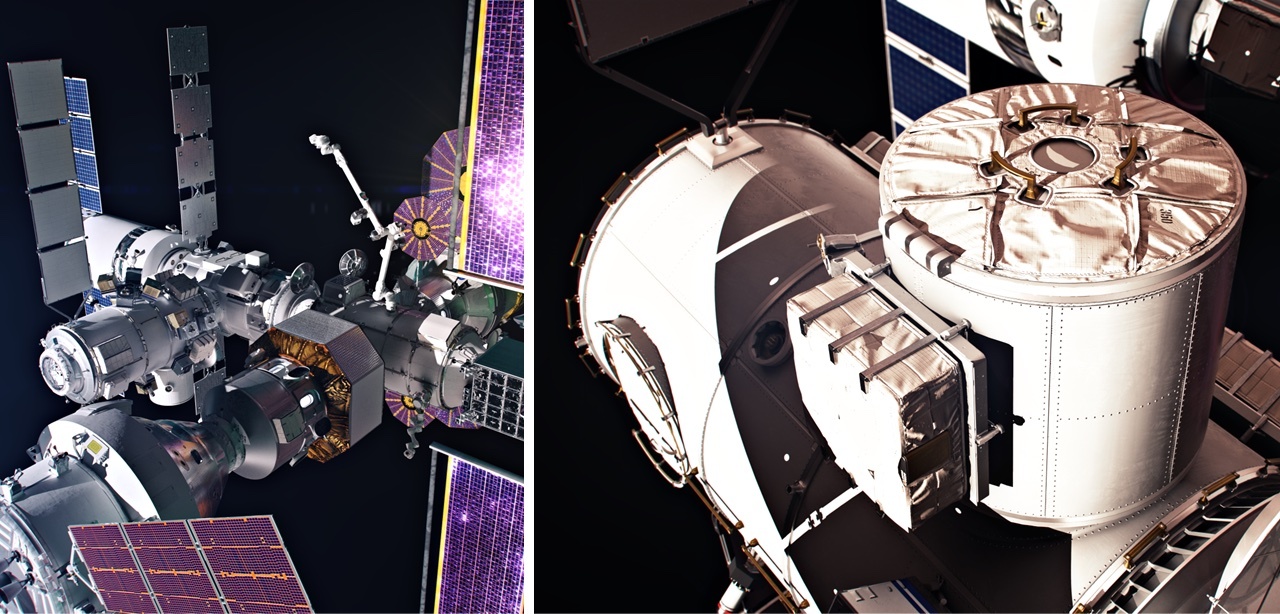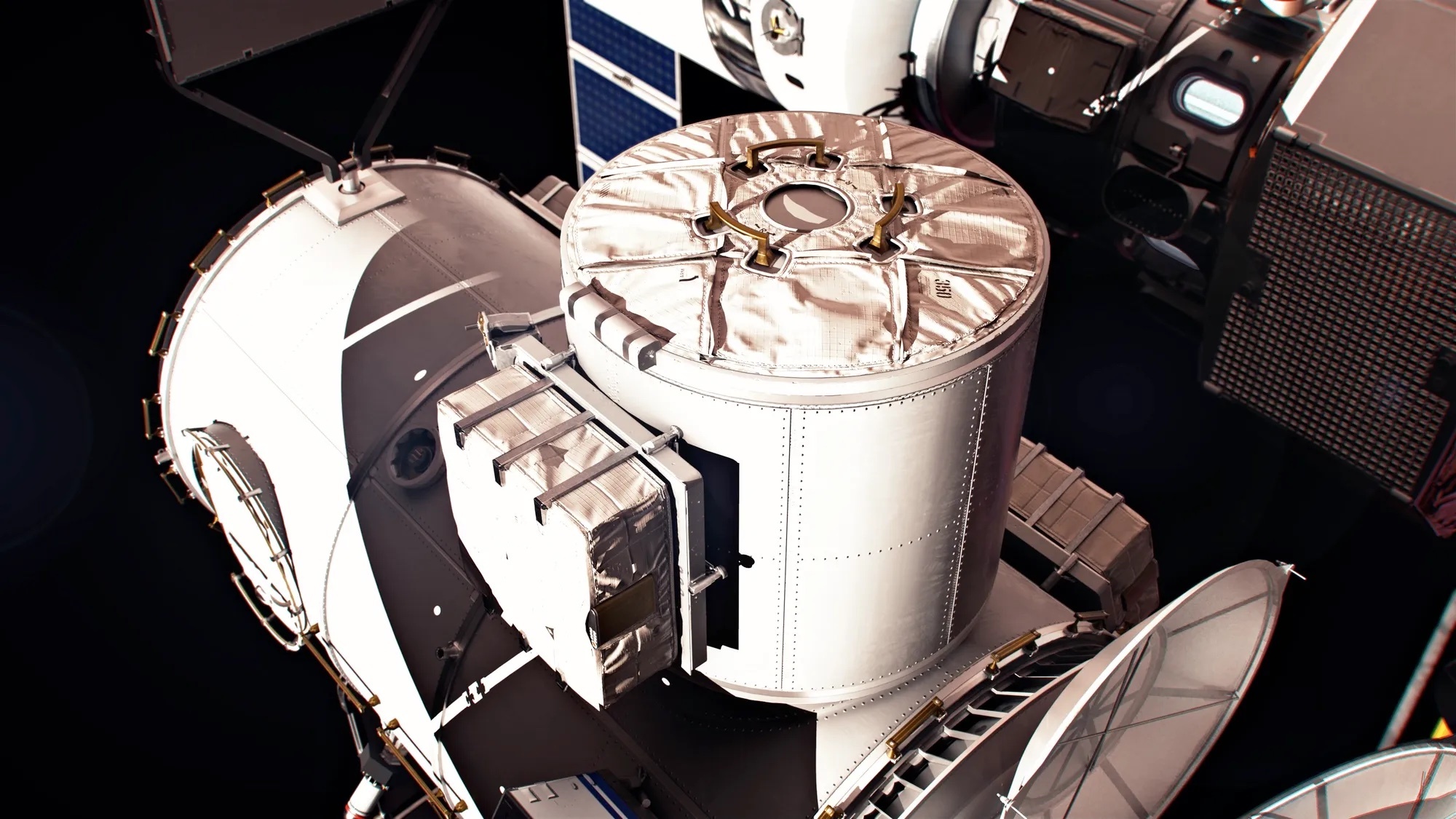9.01.2024

NASA and the Mohammed bin Rashid Space Centre (MBRSC) of the United Arab Emirates (UAE) announced Sunday plans for the space centre to provide an airlock for Gateway, humanity’s first space station that will orbit the Moon. The lunar space station will support NASA’s missions for long-term exploration of the Moon under Artemis for the benefit of all.
“As chair of the National Space Council, I have made it a priority to enhance international cooperation in space. Today’s announcement and partnership between the United States and United Arab Emirates advances this important work. By combining our resources, scientific capacity, and technical skill, the U.S. and UAE will further our collective vision for space and ensure it presents extraordinary opportunities for everyone here on Earth,” said Vice President Kamala Harris.
Under a new implementing arrangement expanding their human spaceflight collaboration with NASA through Gateway, MBRSC will provide Gateway’s Crew and Science Airlock module, as well as a UAE astronaut to fly to the lunar space station on a future Artemis mission.
“The United States and the United Arab Emirates are marking a historic moment in our nations’ collaboration in space, and the future of human space exploration,” said NASA Administrator Bill Nelson. “We are in a new era of exploration through Artemis – strengthened by the peaceful and international exploration of space. The UAE’s provision of the airlock to Gateway will allow astronauts to conduct groundbreaking science in deep space and prepare to one day send humanity to Mars.”
In addition to operating the airlock, MBRSC also will provide engineering support for the life of the lunar space station. The airlock will allow crew and science research transfers to and from the habitable environment of Gateway’s pressurized crew modules to the vacuum of space. These transfers will support broader science in the deep space environment, as well as Gateway maintenance.
Gateway will support sustained exploration and research in deep space, provide a home for astronauts to live and work, including a staging point for lunar surface missions, and an opportunity to conduct spacewalks while orbiting the Moon.
NASA’s Artemis program is the most diverse and broad coalition of nations in human exploration in deep space. In collaboration with the CSA (Canadian Space Agency), ESA (European Space Agency), JAXA (Japan Aerospace Exploration Agency), and now the MBRSC, NASA will return humans to the lunar surface for scientific discovery and chart a path for the first human missions to Mars.
This latest cooperation on Gateway builds on NASA’s and UAE’s previous human spaceflight collaboration. In 2019, Hazzaa Almansoori became the first Emirati to fly to space during a short mission to the International Space Station, in which he collaborated with NASA to perform experiments and educational outreach. A second Emirati astronaut, Sultan Al Neyadi, launched to the space station in 2023 on NASA’s SpaceX Crew-6 mission, where he participated in the floating laboratory’s scientific research that advances human knowledge and improves life on Earth. The UAE currently has two additional astronaut candidates in training at NASA’s Johnson Space Center in Houston. NASA has also worked with UAE on Mars research and human research and analog studies to support mutual exploration priorities.
In 2020, the United States and UAE were among the original signers of the Artemis Accords, which are a practical set of principles to guide space exploration cooperation among nations participating in NASA’s 21st century lunar exploration program.
Through Artemis, NASA will land the first woman and the first person of color on the surface of the Moon, paving the way for a long-term lunar presence and serving as a steppingstone to send the first astronauts to Mars.
Quelle: NASA
+++
UAE to build airlock for lunar Gateway

TITUSVILLE, Fla. — The United Arab Emirates has agreed to develop an airlock module for the lunar Gateway, helping complete the design of the lunar space station while enhancing the UAE’s role in the Artemis lunar exploration effort.
NASA and the UAE’s Mohammed bin Rashid Space Centre (MBRSC) announced Jan. 7 that the UAE would contribute the Crew and Science Airlock for the Gateway. That module will allow Gateway crews to perform spacewalks outside the Gateway as well as install and retrieve external science payloads.
The announcement did not state when the airlock would be added to the Gateway, although Hamdan bin Mohammed, crown prince of Dubai, mentioned in a social media post that the project would be completed in 2030. As part of the agreement, the UAE will get a seat on a future Artemis mission.
“The United States and the United Arab Emirates are marking a historic moment in our nations’ collaboration in space, and the future of human space exploration,” NASA Administrator Bill Nelson said in a statement announcing the agreement. “The UAE’s provision of the airlock to Gateway will allow astronauts to conduct groundbreaking science in deep space and prepare to one day send humanity to Mars.”
The lunar Gateway was envisioned as an extension of the existing International Space Station partnership, with contributions from the United States, Europe, Japan and Canada. The Gateway will operate in a near-rectilinear halo orbit around the moon to support landings at the lunar south polar region. It will be built up over a series of missions, starting with the launch of a propulsion element and habitation module on a Falcon Heavy in 2025.
Russia originally was going to contribute the airlock module, but dropped out of the lunar Gateway program after the then-leader of Roscosmos, Dmitry Rogozin, claimed in 2021 that the project was too “U.S. centric” for his country. NASA officials said in late 2022 they were in discussions with an unnamed country that was not part of the current ISS partnership to provide the airlock.
Around the same time, a Boeing executive, John Mulholland, told the Emirati newspaper The National that the company was in talks with the UAE government about developing the airlock for the Gateway. There was no confirmation of those plans from the UAE and no updates from either the country or Boeing since then.
The agreement is the latest milestone for the UAE’s growing space program. That has included the successful Hope mission that entered orbit around Mars in February 2021 and the long-duration ISS mission by UAE astronaut Sultan Al Neyadi on the Crew-6 mission last year.
The UAE has shown an interest in participating in both the NASA-led Artemis and a Chinese-led alternative, the International Lunar Research Station (ILRS). The UAE was one of the original eight signatories of the Artemis Accords, which outline best practices for space exploration but do not themselves guarantee participation in the Artemis campaign.
In November, the UAE’s University of Sharjah signed a memorandum of understanding with China’s Deep Space Exploration Laboratory to cooperate on ILRS. The Mohammed Bin Rashid Space Centre signed an agreement with China in 2022 to fly a small rover on a future Chinese lunar lander mission, but that plan was reportedly blocked by U.S. export control restrictions.
“This is a historic development and the culmination of momentum that began when the UAE became a founding signatory to the Artemis Accords,” Mike Gold, chief growth officer at Redwire and a former NASA official who helped develop the Accords, told SpaceNews.
“Gateway represents the physical manifestation of the international nature of Artemis,” he said. “At a time when the world is facing conflict and strife, space exploration brings us together in a way that no other field of endeavor can. UAE’s bold commitment to build the literal doorway to the moon has further expanded the singular global partnership that is at the heart of Artemis.”
Quelle: SN

